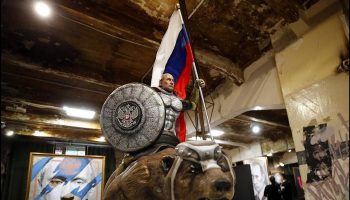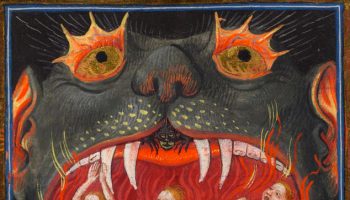On June 15th, 2011 the Daily Telegraph published five articles on the same topic: “If chivalry is dead,” one by Lucy Jones reads, “blame it on the selfish feminists”.
Bullshit.
These were released as a response to a report by the Society for the Psychology of Women, a division of the American Psychological Association. Their report detailed ways that sexism can be harmful to women, even when it manifests as well-intentioned, “chivalrous” actions. The “death of chivalry” is a remarkable meme with a long history.
In 1790, Edmund Burke famously declared “The age of chivalry is gone. — That of sophisters, economists, and calculators, has succeeded; and the glory of Europe is extinguished forever”. In 1823, Lord Byron blamed Don Quixote, “Cervantes smiled Spain’s chivalry away; A single laugh demolished the right arm of his country.” Whether chivalry was killed by Burke’s sophisters of the French Revolution, the “hairy bra-burners”* derided by the Telegraph, or an honourable madman tilting at windmills, chivalry seems to be a Christ figure at the Passion—ever dying for, and because of, our cultural sins. Yet this chivalry-as-Christ is an empty sign; the sins that have done such damage is defined by the culture and values of the polemicist. So too does the wounded figure change; though traditionalists may imply that “chivalry” provides us with unchanging ideals drawn from the Middle Ages, the reality is far more complex.
First, it is important to note that medieval chivalry is not the same as the chivalry of today. Originating from the French “cheval” (horse), the Oxford English Dictionary explains that the term was originally used as a collective noun describing a group of knights. When the term began to be used to describe knightly ideologies in the later Middle Ages, it described the attribute most coveted by knights: prowess. Since knighthood was a warrior-aristocrat culture, that prowess was usually martial, such as that described in The Squire of Low Degree: “He hath bene in Lombardy / And done he hath great chyvalry.”
Over the Middle Ages, religious writers strove to couple that prowess with virtue; this was done to impose a culture of restraint on what often was a group of aristocratic thugs with something to prove. The “virtuous knight” thus became solidified as an ideal that is evinced in a variety of aspirational late-medieval literature. But in actual practice, these values remained secondary to martial prowess. Chivalric ideals were rarely put into practice as anything other than ostentatious showmanship, or a rationalisation of illicit love affairs.
Our contemporary ideology of “chivalry” can be traced to the explosion of medievalism in nineteenth- and early-twentieth-century popular culture. Knighthood and chivalry became coupled with gentlemanly behaviour and the sexual politics of the day, and these values were expressed in neo-medieval art, novels, architecture and, eventually, film. Neo-medieval paintings like those of the pre-Raphaelites, Waterhouse or Leighton have become how we visualise chivalry; Sir Walter Scott’s Ivanhoe has complemented or even supplanted the images of knighthood provided by Mallory, the Gawain Poet, or Chrétien de Troyes.
We can easily contrast medieval chivalry with our own ideas of it. When asked to devise a list of activities that would be considered “chivalrous” in my Age of Chivalry module, the list my students devise is quite limited: giving a woman a coat on a cold night, paying the bill on a date, kissing a hand and, by far the most popular response, opening a door. They sometimes argued that the gender of the participants need not be fixed, but when challenged, they conceded that a man opening a door for another man, or a woman for a man would be “polite” but not “chivalrous”.
“Chivalry” has been pared back only to encompass a type of politeness consciously performed by men within heterosexual relationships. It no longer connotes prowess; “chivalrous” does not apply to figures like Wayne Rooney, or the elite soldiers of the armed forces (even though as Allen J. Frantzen points out in Bloody Good: Chivalry, Sacrifice and the Great War, soldiers, especially pilots, in the First World War conceived of themselves in this way).
We do not even conceive of chivalry as being a part of the Middle Ages. Popular-cultural depictions of the period—even ones in which knighthood features—rarely use the word “chivalry”. The two recent films which meditate most on medieval knighthood, Ridley Scott’s epic Kingdom of Heaven and Brian Helgeland’s jousting-sport pastiche A Knight’s Tale never mention it. Each contains a scene where the main character is knighted, but they espouse knightly virtues very different from our modern performative politeness.
In Kingdom of Heaven (Scott’s first film after himself being knighted), when the protagonist Balian is knighted by his father Godfrey, he is charged with: “Be without fear in the face of your enemies. Be brave and upright that God may love thee. Speak the truth always, even if it leads to your death. Safeguard the helpless and do no wrong. That is your oath. [Godfrey slaps Balian] And that’s so you remember it.” Bravery, honesty, and stewardship of the helpless are the chief chivalric virtues here. Balian proceeds to prove his worth primarily through the latter—with a humanitarian motivation “to protect the people” that would baffle most medieval knights. In his romantic relationship, he opens no doors, kisses no hands and, despite Sibylla already being married, his love is neither distant nor chaste.
In Helgeland’s A Knight’s Tale, Edward the Prince of Wales chooses to knight the hero, William Thatcher, at the end of the second act despite William’s humble origins.
The reasons Edward cites are: “Your men love you. If I knew nothing else about you, that would be enough. But you also tilt when you should withdraw. And that is knightly too.” This roughly fits the democratic/meritocratic thrust of the film: through hard work and skill, even a poor man can “change his stars” and rise to knighthood, win wealth and fame and the woman of his dreams. The primary chivalrous virtues on display, and for which the hero is rewarded, are bravery and prowess.
Chivalry, as presented in medieval narratives and in these films, is not something so easily killed as the Daily Telegraph might presume. As an expression of bravery, prowess and virtue, it need neither seem antiquated in the modern era nor be limited to heterosexual men. But if it is simply performed politeness, tethered to Victorian socio-sexual ideals and best expressed by holding open a door, then chivalry, as an ideology, not only is dead but deserves to be.
* No matter what the Telegraph writers may think, bra-burning by feminists is a myth used to paint them as irrational and dangerous.





Very good article. I actually like both of those films quite a lot, despite their flaws, but I had never realized that (perhaps unknowingly), they present a relatively realistic portrayal of the knightly ideal. A more in-depth review dedicated exclusively to A Knight’s Tale would be great as well, especially considering your emphasis on studying the public’s relationship with the Midle Ages. I can’t think of a more straightforward example of such relationship than that movie.
I don’t see how films from the early 21st century can be used as evidence for what chivalry meant to people of the Middle Ages; they can only indicate what it meant to the people of the early 21st century. Of course the term “Middle Ages” itself is suspect; I doubt that “chivalry” meant the same to William Marshal as it did to Adrian Fortescue (and certainly to neither what it meant to Kenelm Digby or Ridley Scott).
I would hazard the opinion that one characteristic could be traced, though, through the first three and those in between that had been carefully strained out of the term by the modern Zeitgeist, and that is the deliberate inegalitarianism of the term. Up to quite modern times, “chivalry” was the perquisite of the “gentleman” — that is, a male member of the landed classes. That, of course, is a good deal of Burke’s meaning; he was warning that taking power from the landed gentry and giving it to the merely monied (or worse yet, the mob) would completely subvert (European) civilization.
Of course, “chivalry” always meant more than mere politeness of males to females, when it meant anything important. Nevertheless, that does not prove in any way that politeness of males to females deserves to be made away with, because it is, at least, an invitation to consider the idea that mere bodily strength is not the only thing that commands respect, which is, at least, a glance toward the fundamentally important idea that Might does not necessarily make Right. Even that attenuated form of “chivalry” has some good in it.